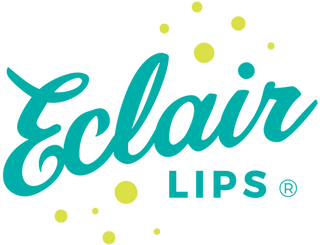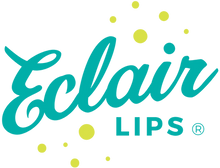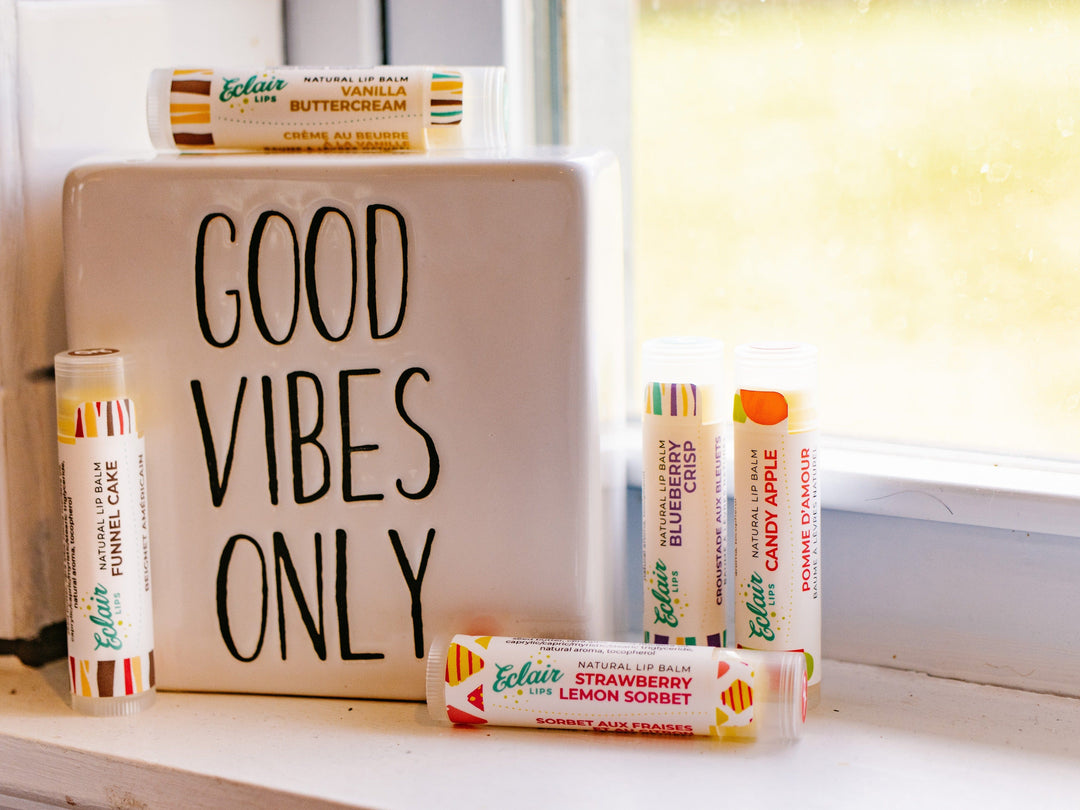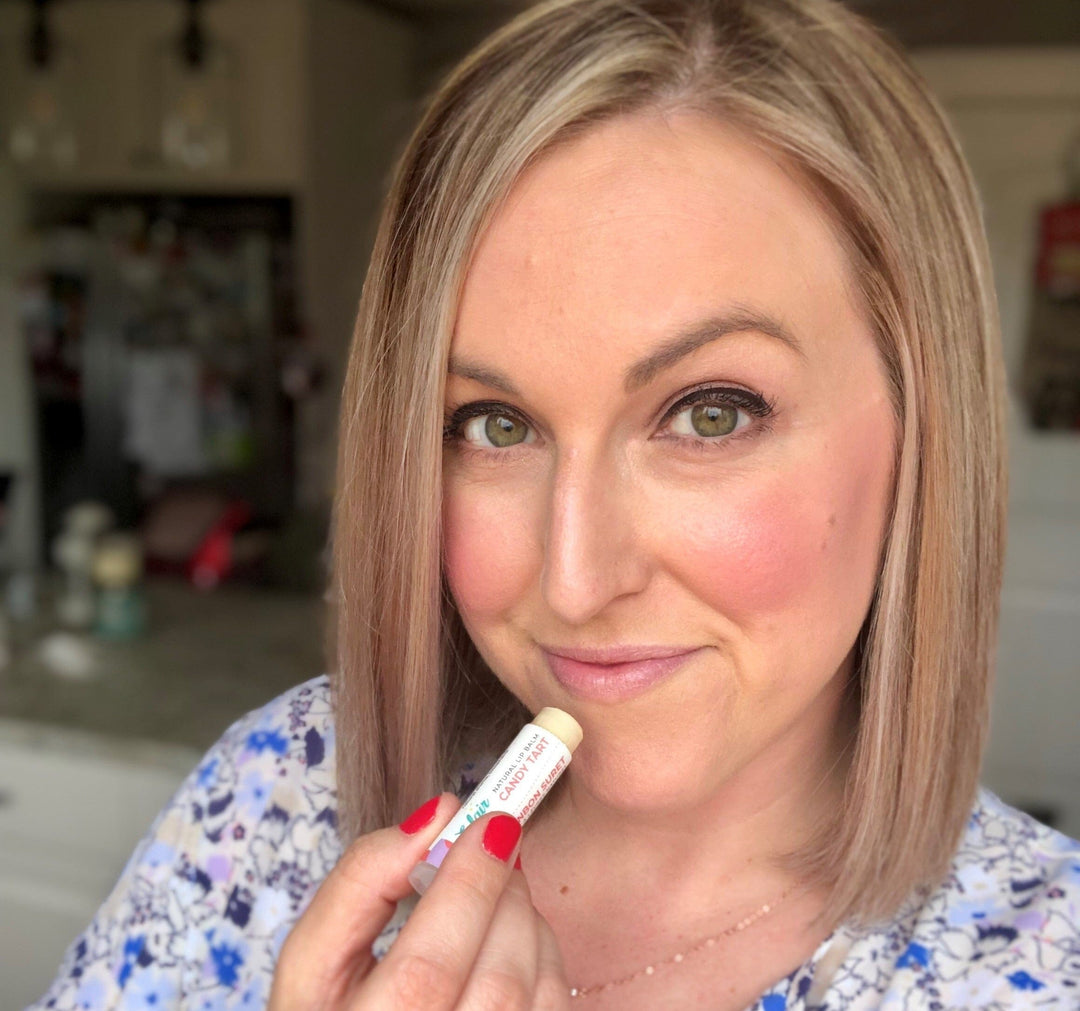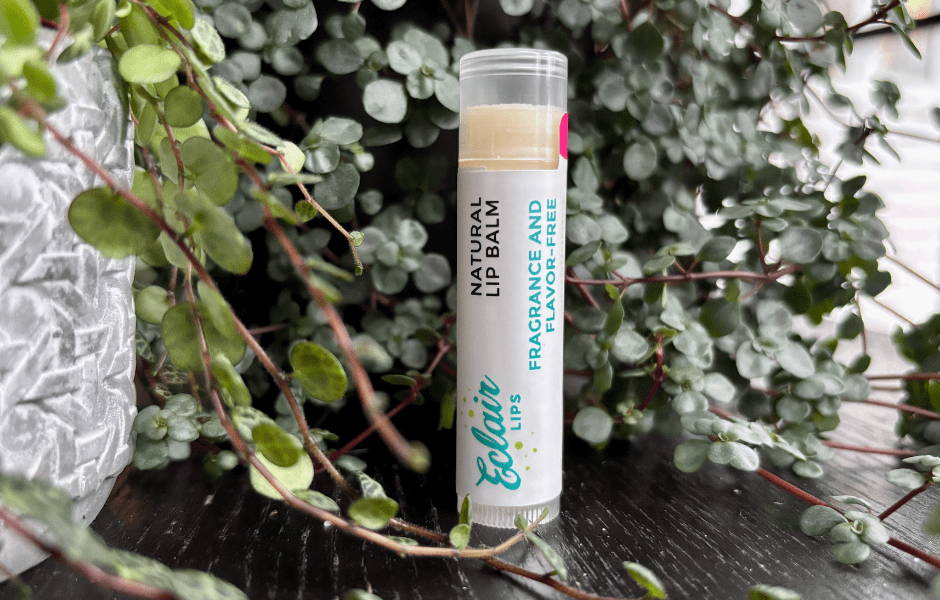Best Lip Balm for Winter: Survive the Cold Without the Cracks
Survive the Cold Without the Cracks

With so many lip care products out there, you might be wondering which is the best lip balm for winter, especially if your lips feel like sandpaper after the first few weeks of cold weather. That first blast of cold air in November feels almost personal, like the weather has decided your lips are its favourite target. By December, you're reapplying balm every hour, and by February, you're convinced nothing will ever make them feel normal again.
Winter doesn't just make your lips uncomfortable, it attacks them from multiple angles. Cold air holds almost no moisture and pulls water straight out of your lips. Wind doesn't just feel brutal, it physically strips away whatever protection your balm created. And then there's indoor heating, which creates air so dry it rivals the Sahara (but without the warmth to make it worthwhile).
The light, glossy formula that worked beautifully in July will slide right off in January. The mentholated stick that felt refreshing in summer now stings like fire on wind-chapped skin. What you need is a balm specifically designed for harsh winter conditions, one that creates a real barrier against the elements and actually makes your lips feel better instead of just sitting on top doing nothing.
Quick Takeaway
- Cold air and wind strip moisture from lips faster than your body can replace it
- Winter balms need higher wax content and richer butters than summer formulas
- Cocoa butter, beeswax, and coconut oil are the holy trinity of winter lip protection
- Reapply every 1-2 hours outdoors, and use a thick layer before bed
Contents
Why Winter Destroys Your Lips
Winter doesn't just make your lips uncomfortable, it actively damages them. Understanding why helps you choose the right defense (and stops you from wasting money on balms that won't work).
Cold air holds almost no moisture. When you step outside in January, that dry air pulls water straight out of your lips. The thinner skin on your lips has no oil glands to protect it, so it loses moisture faster than the rest of your face. This is why your lips can feel tight and dry within minutes of going outside, even if you just applied balm.
Wind makes everything worse. It doesn't just feel cold, it physically strips moisture from your lips and breaks down whatever protective layer your balm created. Dermatological research shows that wind exposure significantly increases transepidermal water loss (which is exactly what it sounds like: your skin losing water to the environment). For lips, which are already vulnerable, wind exposure can cause cracking within hours.
Indoor heating creates a hidden problem most people don't think about. Canadian winters mean most of us spend huge chunks of time in heated buildings, cars, and homes. That warm air feels good, but it's incredibly dry, sometimes even drier than the cold air outside.
When you're inside for eight hours with the heat running, your lips are constantly losing moisture to the air around you. This is why your lips can feel worse at your desk than they did on your morning commute.
Low humidity ties it all together. Winter air (both outside and inside) typically has very low humidity levels. According to dermatology guidelines, low humidity environments make it much harder for your lips to maintain their natural moisture barrier. Without that barrier, lips crack, peel, and become painful. The cycle is brutal: dry air removes moisture, wind breaks down protection, heating keeps humidity low, and your lips never get a chance to recover.

What Makes a Winter Lip Balm Different
Not all lip balms are created equal, and the difference becomes painfully obvious when winter hits. Which lip balm is best for winter? The answer depends on specific characteristics that lighter formulas just don't have.
Higher wax content is crucial. Winter balms need more wax to create a protective barrier that stays put in cold temperatures and wind. Beeswax or candelilla wax should appear high on the ingredient list (ideally within the first three ingredients). This gives the balm structure and staying power so it doesn't just melt off or get blown away the moment you step outside.
Rich, stable butters make the difference between a balm that works and one that fails. Cocoa butter is the winter champion. It's firm enough to hold up in cold weather without getting brittle, and it creates a thick, protective cushion on your lips.
Shea butter is also popular, but it can feel heavier and doesn't always perform as well in extreme cold. For Canadian winters specifically, cocoa butter formulations tend to work better.
Oils that don't solidify keep your balm usable. Coconut oil is perfect for winter because it stays workable in cold temperatures without turning into a hard, unusable lump. Some oils, like certain plant oils, can stiffen up when it's very cold, making the balm hard to apply. Coconut oil maintains just enough fluidity to keep the balm smooth without being so soft that it melts off.
No irritating ingredients is non-negotiable in winter. Winter-chapped lips are already sensitive and often cracked. This is not the time for menthol, camphor, or strong flavours that sting. The best lip balm for harsh winter should feel soothing the moment you apply it, never burning or tingling. If your lips are already raw from wind and cold, irritating ingredients will make them worse.
Thick, long-lasting texture means you're not reapplying every twenty minutes when it's minus fifteen outside. A good winter balm should feel substantial, like it's creating a real layer of protection that will last through your commute, your errands, or your time on the slopes.
The Ingredients That Actually Work in Winter
When you're choosing the best lip balm for winter, the ingredient list tells you everything. Here's what to look for and why it matters in cold weather.
Cocoa butter is the MVP of winter lip care. It's naturally firm but melts at body temperature, so it creates a thick, protective layer without feeling stiff or waxy. It holds up beautifully in cold temperatures (it won't get brittle or crack the way some ingredients do when the mercury drops), and it provides deep moisture that lasts. Look for balms where cocoa butter appears in the first few ingredients like this vanilla buttercream option.
Beeswax is your barrier ingredient. It creates a seal that locks in moisture and shields your lips from wind and cold. In winter, this barrier function is critical, without it, any moisture you apply will just evaporate into the dry air.
Beeswax also gives balm its structure, keeping it solid in your pocket without making it so hard that you can't apply it. It's cold-stable and wind-resistant, which makes it perfect for harsh climates.
Coconut oil brings smooth glide and quick comfort. It melts on contact, which means the balm applies easily even when your lips are dry and rough. Crucially, coconut oil doesn't solidify too much in cold temperatures, it stays workable, so your balm doesn't turn into a hard, useless stick when you leave it in your car or coat pocket.
What to avoid in winter: Skip anything with menthol, camphor, peppermint, or eucalyptus. These create a cooling or tingling sensation that might feel good in summer but will burn on wind-chapped winter lips. Also avoid balms where oils dominate without enough wax, they'll feel nice for about ten minutes and then vanish, leaving you worse off than before.
The perfect winter formula is a balance: enough wax to protect and stay put, enough butter to moisturise deeply, and enough oil to keep everything smooth and comfortable. When you see cocoa butter, beeswax, and coconut oil all listed near the top, you've found a balm that's built for winter.

Myths About Winter Lip Care
There's a lot of bad advice floating around about how to care for your lips in winter. Let's clear up the most common myths so you can actually protect your lips instead of making things worse.
Myth: Your summer lip balm will work fine in winter.
This is one of the biggest mistakes people make. A light, glossy balm that felt perfect in July will not protect your lips in January. Summer balms are often oil-heavy with minimal wax, which means they feel slippery and comfortable in warm weather but offer almost no protection against cold and wind.
In winter, that formula will slide right off your lips, leaving you exposed to the elements within minutes. The truth is that seasonal formulations make a real difference. Winter balms need more wax, firmer butters, and ingredients that can stand up to harsh conditions.
Myth: Licking your lips helps when they're dry.
Licking your lips feels like it's adding moisture, but it's actually one of the worst things you can do in winter. Saliva evaporates quickly, especially in cold, dry air, and when it does, it takes even more moisture with it. You end up in a cycle where your lips feel worse, so you lick them more, which makes them even drier. Instead, reach for your balm every time you have the urge to lick.
Myth: You don't need SPF in winter.
Snow reflects UV rays, which means you're getting hit from above and below when you're outside in winter. Skiers and snowboarders know this well, sunburn on the slopes is real, and your lips are especially vulnerable. If you're spending time outdoors in winter, especially in bright conditions or at altitude, SPF protection is just as important as it is in summer (though Eclair Lips doesn't currently offer SPF products, so you'll need to add a separate SPF lip balm for sun protection).
Myth: Drinking more water will fix dry lips.
Staying hydrated is important for overall health, but it won't magically solve winter lip problems. Your lips are losing moisture to the environment faster than your body can replace it internally. You need a physical barrier (a good balm) to protect them. Hydration helps, but it's not a substitute for proper lip care.
Myth: The tingling means it's working.
If your lip balm tingles or burns, that's not a sign of effectiveness, it's a sign of irritation. Ingredients like menthol create that sensation, but they don't actually help your lips heal. In fact, on cracked winter lips, they make things worse by irritating already-damaged skin. A protective balm should feel soothing, not stinging.
Comparing Winter Lip Care Strategies
Different situations and preferences call for different approaches to winter lip care. Here's how the main options compare when you're dealing with cold weather.
| Strategy | Best For | Pros | Cons |
|---|---|---|---|
| Heavy-duty protection (high wax/butter) | Outdoor activities, severe weather, long commutes | Lasts hours, excellent wind protection, creates real barrier | Can feel waxy or heavy, not everyone likes the texture |
| Lightweight comfort (more oil, less wax) | Mild winters, mostly indoor days, frequent reapplication | Comfortable feel, easy to reapply, less noticeable | Doesn't protect as well in harsh conditions, needs frequent reapplication |
| Scented formulas | When lips aren't badly damaged, personal enjoyment | Pleasant experience, makes reapplication feel nice | Can sting on cracked lips, fragrance may irritate sensitive skin |
| Fragrance-free formulas | Cracked or sensitive lips, maximum gentleness | Safest for damaged skin, no risk of irritation from scent | Some find them less enjoyable to use |
| Daytime balms | Work, errands, regular activities | Layers well under lipstick, reapplies easily | Needs more frequent touch-ups |
| Nighttime intensive treatment | Sleep, overnight healing | Maximum moisture, long contact time, helps lips regenerate | Too thick for daytime wear |
The key is matching the formula to the situation: heavier protection for harsh conditions, lighter comfort when you're mostly indoors, and serious moisture overnight when your lips can focus on healing.

Real Winter Scenarios: What Works Where
Winter looks different depending on where you are in Canada or the northern US, and your lip care strategy should match your climate and activities.
Skiing in Whistler: High altitude, bright sun reflecting off snow, cold wind, this is the ultimate test for lip balm. You need a thick, protective formula that won't wear off after an hour, and you absolutely need SPF (though you'll need to add a separate SPF product since Eclair Lips doesn't currently offer SPF options). Reapply at lunch and after any wipeouts in the snow.
Calgary chinooks: If you live somewhere with wild temperature swings (like Calgary, where it can be minus twenty in the morning and plus five by afternoon), you need a balm that performs in both extremes. Look for something with balanced wax and oil so it doesn't get too hard in the cold or too melty when it warms up. Keep one in your coat and one in your bag so you're never caught without.
Toronto streetcar waits: Standing at a stop in January wind is brutal. That biting wind cuts right through light balms, so you want something with serious staying power like this option. Apply before you leave the house, and reapply once you're on the streetcar if your lips feel tight. A balm with beeswax high on the ingredient list will hold up better than an oil-heavy formula.
Maritime coastal winds: Atlantic Canada winters are wet, windy, and cold in a way that feels uniquely miserable. Coastal wind is relentless, and the moisture in the air doesn't actually help your lips, it just makes the cold feel worse. You need a thick, occlusive balm that creates a real barrier against wind and damp. Cocoa butter formulations work especially well here.
Indoor heating all day: If you're working from home or in an office with the heat blasting, your lips are dealing with constant low humidity. Keep a balm on your desk and apply it regularly (every hour or two if needed). Because you're not battling outdoor elements, you can use a lighter formula during the day, but still layer on something protective at night.
Outdoor winter activities: Whether you're running, cycling, or just walking the dog, prolonged outdoor exposure in winter requires preparation. Apply balm before you go out (don't wait until your lips already feel dry), and bring it with you to reapply as needed, especially if you'll be out for more than an hour.
The common thread in all these scenarios: preparation matters, and the right formula for the conditions makes all the difference.
What Dermatologists Say About Winter Lip Care
Dermatological research offers clear guidance on how to protect your lips when temperatures drop. Here's what the science says.
Barrier function is everything in winter. According to dermatology guidelines, the main goal of winter lip care is maintaining and restoring your lips' moisture barrier. When that barrier breaks down (which happens quickly in cold, dry, windy conditions), your lips lose water faster than your body can replace it. This leads to cracking, peeling, and pain. The solution is a balm that creates a physical barrier to prevent moisture loss. Ingredients like beeswax and cocoa butter do this effectively.
Low humidity makes lips more vulnerable. Studies on skin function in low-humidity environments show that moisture loss accelerates dramatically when relative humidity drops below 30 percent. Winter air (both indoors and outdoors) often falls well below that threshold. This means your lips are fighting an uphill battle all season. Humidifiers can help indoors, but when you're outside, a protective balm is your only defense.
Wind exposure causes measurable damage. Research on wind effects on skin barrier function demonstrates that wind doesn't just feel uncomfortable, it actively damages the skin's protective layer. For lips, which already have a thinner, more fragile barrier than other skin, wind exposure can cause cracking and inflammation within hours. This is why windproof protection (from waxes and butters) is so important in winter formulas.
Reapplication frequency matters. Dermatologists recommend reapplying lip balm frequently in winter, ideally every one to two hours when you're outdoors, and every few hours when indoors. The protective layer wears off faster in harsh conditions, so even the best balm needs to be refreshed regularly. Don't wait until your lips feel dry, apply preventatively.
The professional consensus is clear: winter lip care requires a proactive, protective approach with the right ingredients and consistent reapplication.

When Heavy-Duty Isn't Enough: Alternative Approaches
Sometimes even the best winter lip balm needs backup. If you're dealing with severely cracked lips or extreme conditions, here are some alternative strategies to consider.
Layering technique: Start with a thin layer of a rich balm in the morning, then reapply throughout the day. Before bed, apply an extra-thick layer (like you're creating a mask) and let it work overnight. This "layer and seal" approach gives your lips continuous protection and deep moisture when they need it most.
Exfoliation with caution: If your lips are flaky and peeling, you might be tempted to scrub them. But be gentle, winter lips are often already damaged, and aggressive exfoliation can make things worse. Use a very gentle lip scrub once a week at most, and follow immediately with a protective balm. Never exfoliate if your lips are cracked or bleeding.
Overnight intensive treatment: For lips that are in rough shape, dedicate your sleep time to healing. Before bed, apply the thickest, richest balm you have (something butter-heavy that creates a serious barrier). Your lips regenerate overnight, and giving them maximum moisture during that time helps them heal faster.
Humidifier support: If you wake up with dry lips every morning despite using balm at night, your bedroom air is probably too dry. A small humidifier can make a real difference, especially if you sleep with your mouth open or if your heating system runs all night.
Check for underlying issues: If your lips are constantly cracked all winter despite using protective balm, it might not be just the weather. Nutritional deficiencies (especially B vitamins or iron), dehydration, or even certain medications can make lips more vulnerable. If your lips don't improve with good care, it's worth talking to a healthcare provider.
The bottom line: the best lip balm for winter should do most of the work, but in severe cases or extreme conditions, adding these extra strategies can give your lips the boost they need to survive the season.
FAQs About the Best Lip Balm for Winter
How often should I reapply lip balm in winter?
Every one to two hours when you're outdoors in cold or windy conditions, and every few hours when you're indoors with heating. Don't wait until your lips feel dry, apply preventatively. If you're doing outdoor winter activities like skiing or running, reapply even more frequently, especially after eating or drinking.
Can I wear lip balm under lipstick in winter?
Yes, and you probably should. Winter air dries out your lips faster, so a protective base layer helps your lipstick look better and prevents your lips from getting damaged. Apply a thin layer of balm, let it absorb for a minute, then apply your lipstick. For long wear, blot the balm lightly before adding colour so it doesn't slide around.
What's the best lip balm for skiing or winter sports?
Look for a thick formula with high wax content for wind protection. You'll also need to add SPF protection separately (Eclair Lips doesn't currently offer SPF products). Apply before you head out, and bring it with you to reapply throughout the day, especially after lunch or any face-plants in the snow.
Do I really need SPF in winter?
Yes, especially if you're outside in bright conditions or around snow. Snow reflects up to 80 percent of UV rays, which means you're getting hit from above and below. Your lips are particularly vulnerable to sun damage, and winter sunburn is real. If you're skiing, snowshoeing, or spending extended time outside, you'll need to add a separate SPF lip balm to your routine.
Why does my lip balm feel harder in winter?
Cold temperatures can make wax-based balms feel firmer. If your balm is too hard to apply comfortably, warm it between your hands for a few seconds before using it, or keep it in an inside pocket where body heat will keep it slightly softer. A formula with coconut oil tends to stay more workable in cold weather than one with only heavy waxes.
Can I use the same balm indoors and outdoors in winter?
You can, but you might want different strategies. Indoors with heating, you can use a lighter formula and reapply less often. Outdoors in cold and wind, you need something heavier with more protection. Some people keep a heavier balm for going outside and a lighter one for their desk or bedside table.
What if my lips are already cracked and bleeding?
Switch to the simplest, gentlest formula you can find, fragrance-free, with just cocoa butter, beeswax, and coconut oil. Apply it constantly, especially before bed. Avoid anything with menthol, camphor, or strong flavours that will sting. If your lips don't start improving within a week of consistent care, or if the cracks are severe, see a healthcare provider, you might need medical treatment.
Is it worth investing in an expensive winter lip balm?
Not necessarily. Price doesn't always equal performance. What matters is the ingredient list and formula. A simple balm with cocoa butter, beeswax, and coconut oil from a small brand can work just as well as (or better than) an expensive luxury option. Focus on the ingredients, not the marketing or packaging.
Conclusion
Winter doesn't have to mean suffering through cracked, painful lips. The best lip balm for winter combines protective waxes, rich butters, and stable oils in a formula designed to stand up to cold, wind, and dry air. Choose a balm built for your climate, apply it preventatively, and reapply often. Your lips will thank you all season long.
More Lip Balm Guides
- When you need pure protection without the scent
- Finding relief for sensitive lips
- How to find flavours you'll actually love
- Essential oils that actually work in lip balm
- What keeps lips comfortable all day
- Ingredients that actually make the difference
- Dermatologist recommendations that work
- How to choose at the drugstore
- Managing angular cheilitis with lip balm
- Lip care during Accutane treatment
Explore Our Online Lip Balm Shop
At Eclair Lips, we believe the best lip balm is the one you love to use every day. Every balm is handmade in small batches with natural ingredients, playful dessert-inspired flavours, and a texture we obsessed over until it felt just right. We ship anywhere in Canada and the US, so whether you are in Toronto, Halifax, Las Vegas, or Chicago, you can stock up on your favourite lip balm Canada style, right from your couch.
In our shop, you will find tinted lip balm for a hint of colour, fragrance free balm if your lips are on the sensitive side, gentle lip scrubs to keep everything smooth, and even lip balm for kids when you want something safe and fun to share. Looking for variety? Try a lip balm set to explore new flavoured lip balm favourites or to give as a gift.
Our brand is built on honesty, humour, and heart, and that means no scare tactics, no overblown claims, just lip care that feels good and makes you smile.
Take a peek at our collections here: https://eclairlips.com.
Disclaimer: The information in this post is meant to be helpful, and while we love dorking out about lip balm, it isn't medical advice. Everyone's needs are different, so if you have concerns about allergies, sensitivities, pregnancy, or a medical condition, please check with a healthcare professional before trying new products.
